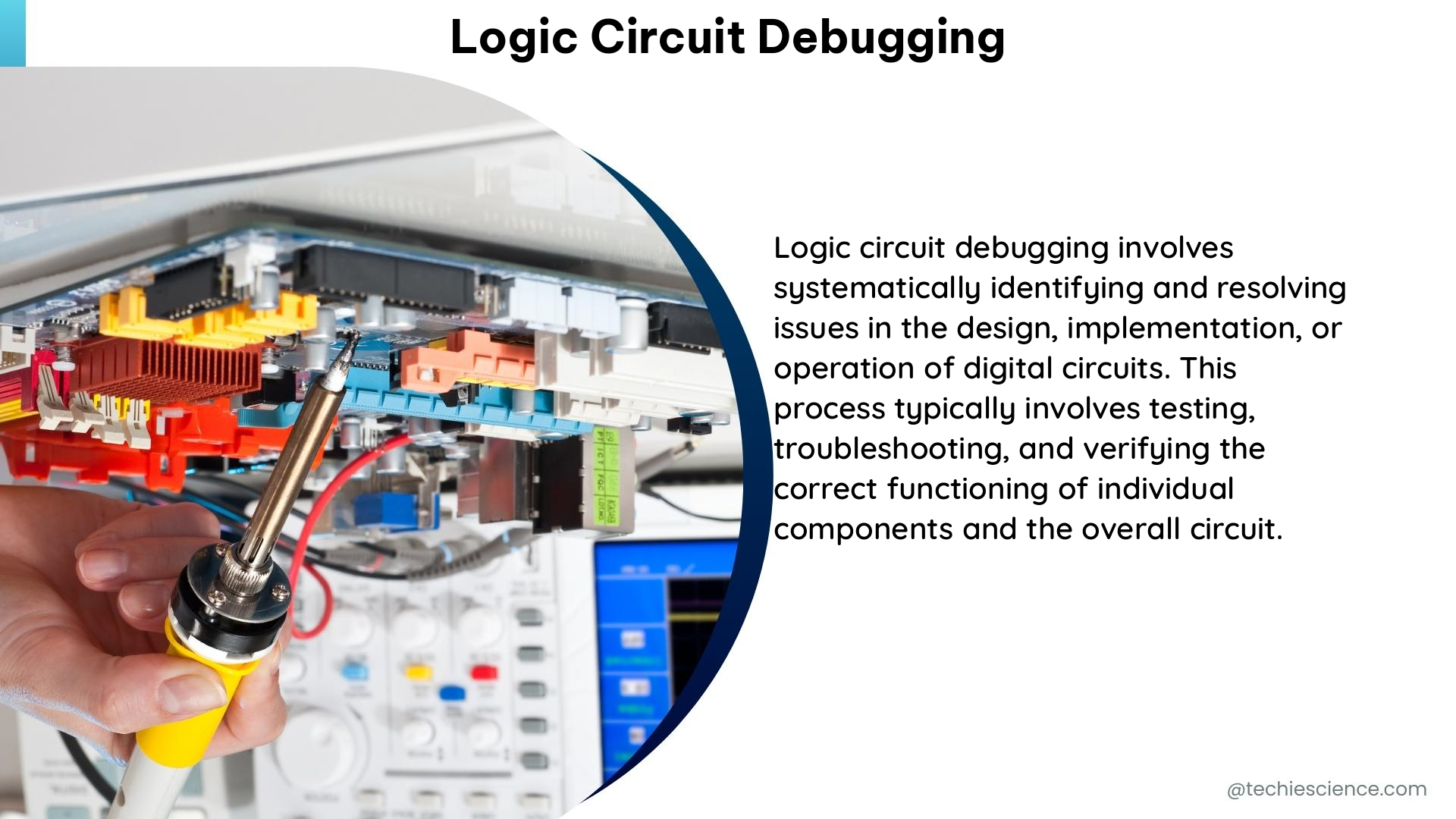Summary
Logic circuit debugging is a critical process in the design cycle of digital circuits, aimed at identifying and correcting fault locations or suspects in a buggy design to ensure compliance with specified requirements. This comprehensive guide delves into the intricacies of logic circuit debugging, providing electronics students with a deep understanding of the theoretical foundations, practical techniques, and advanced methodologies to master this essential skill.
Understanding the Complexity of Logic Circuit Debugging

The complexity of faults in digital circuits has increased significantly, necessitating the adoption of advanced automatic fault diagnosis methods to maintain low production costs and enhance system performance. These methods are designed to avoid the negative consequences of logic faults and determine abnormal functioning from data that may be corrupted due to unpredictable events.
The design flow for digital circuits can be divided into two main groups:
-
HDL Specification, RTL Synthesis, and Logic Synthesis: In the early stages of this group, malfunctions might arise due to specification changes, bugs in automated tools, or human factors. Logic corrections are then applied to identify possible corrections in the erroneous netlist to match the specification.
-
Physical Design and Chip Generation: In the latter stages of this group, the fabricated chip might fail testing, requiring fault diagnosis based on the faulty chip and a netlist. Fault injection is used to emulate the behavior of the faulty chip in the netlist.
Debugging Combinational Circuits
Debugging combinational circuits involves generating counter-examples that trigger failures and then returning a set of locations in the buggy design that might be responsible for the observed faults. This process typically includes the following steps:
- Fault Modeling: Develop a comprehensive fault model that accurately represents the potential faults in the circuit, such as stuck-at faults, bridging faults, and delay faults.
- Test Generation: Generate a set of test vectors that can effectively detect the modeled faults and provide meaningful information for the debugging process.
- Fault Simulation: Perform fault simulation to determine the fault coverage of the generated test vectors and identify the potential fault locations.
- Fault Diagnosis: Analyze the fault simulation results and apply advanced debugging techniques, such as Boolean satisfiability (SAT) or maximum satisfiability (MaxSAT), to identify the most likely fault locations.
Debugging Sequential Circuits
Debugging sequential circuits is similar to the process for combinational circuits, but their behavior must be modeled for a finite number of clock cycles. Common approaches for modeling sequential circuits include:
- Time Frame Expansion Technique: This method connects the current state and the next state together, transforming the sequential circuit into an “unfolded combinational circuit” that can be debugged like any other combinational circuit.
- Iterative Logic Array (ILA) Representation: This technique also connects the current state and the next state, creating an “unfolded combinational circuit” that can be debugged using similar techniques as for combinational circuits.
These approaches allow for the application of combinational circuit debugging techniques to sequential circuits, providing a comprehensive framework for identifying and correcting faults in complex digital designs.
Theoretical Foundations and Numerical Problems
Mastering logic circuit debugging requires a solid understanding of electronics formulas, theorems, and numerical problems. Electronics students should be familiar with the following concepts:
- Boolean Algebra: Understand the basic operations and properties of Boolean algebra, such as AND, OR, NOT, and XOR gates, as well as Boolean identities and simplification techniques.
- De Morgan’s Laws: Comprehend the principles of De Morgan’s laws and their application in logic circuit design and debugging.
- Thevenin’s Theorem: Understand the Thevenin equivalent circuit and its use in analyzing and debugging logic circuits.
- Numerical Problems: Practice solving a variety of numerical problems related to logic circuits, such as calculating the output of a gate given specific input values or designing a circuit to meet certain specifications.
By mastering these theoretical foundations and numerical problem-solving skills, electronics students can develop a deep understanding of the underlying principles and techniques required for effective logic circuit debugging.
Reference Materials for Further Exploration
To further enhance their understanding of logic circuit debugging, electronics students can refer to the following resources:
- Debugging Sequential Circuits Using Boolean Satisfiability
- Logic Circuit Design with VHDL
- Logic Design and Simulation
These materials provide in-depth coverage of various aspects of logic circuit design, including debugging techniques, best practices, and advanced methodologies.
By following the guidelines and utilizing the resources presented in this comprehensive guide, electronics students can develop a strong foundation in logic circuit debugging and enhance their ability to design, analyze, and troubleshoot complex digital systems.
Reference:
- Debugging Sequential Circuits Using Boolean Satisfiability
- Logic Circuit Design with VHDL
- Logic Design and Simulation

The lambdageeks.com Core SME Team is a group of experienced subject matter experts from diverse scientific and technical fields including Physics, Chemistry, Technology,Electronics & Electrical Engineering, Automotive, Mechanical Engineering. Our team collaborates to create high-quality, well-researched articles on a wide range of science and technology topics for the lambdageeks.com website.
All Our Senior SME are having more than 7 Years of experience in the respective fields . They are either Working Industry Professionals or assocaited With different Universities. Refer Our Authors Page to get to know About our Core SMEs.